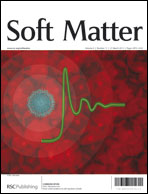The use of agar-based biomaterials for the development of emerging areas, such as tissue engineering or ‘smart materials’ production has recently gained great interest. Understanding how these gel-forming polysaccharides self-organise in aqueous media and how these associations can be tuned to meet the specific needs of each application is thus of great relevance. As an extension of previous pioneering research concerning the application of the microwave-assisted extraction (MAE) technique in the recovery of native (NA) and alkali-modified (AA) agars, this article focuses on the different molecular assemblies assumed by these novel NA and AA when using different MAE routes. The molecular architectures in dilute (5, 10, 50 and 100 μg mL−1) and concentrated (1.5% (w/w)) aqueous media were imaged by AFM and cryoSEM, respectively. Relevant structural and physicochemical properties were investigated to support the microscopic data. Different extraction routes led to polysaccharides with unique properties, which in turn resulted in different molecular assemblies. Even at 5 μg mL−1, AFM images included individual fibers, cyclic segments, aggregates and local networks. At higher polymer concentrations, the structures further aggregated forming multilayer polymeric networks for AA. The more compact and denser 3D networks of AA, imaged by cryoSEM, and their higher resistance to large deformations matched the 2D-shapes observed by AFM. Depending on the nature of the AA chains, homogeneous or heterogeneous growth of assemblies was seen during network formation. The obtained results support well the view of double helix formation followed by intensive double helix association proposed for agar gelation.

You have access to this article
 Please wait while we load your content...
Something went wrong. Try again?
Please wait while we load your content...
Something went wrong. Try again?


 Please wait while we load your content...
Please wait while we load your content...